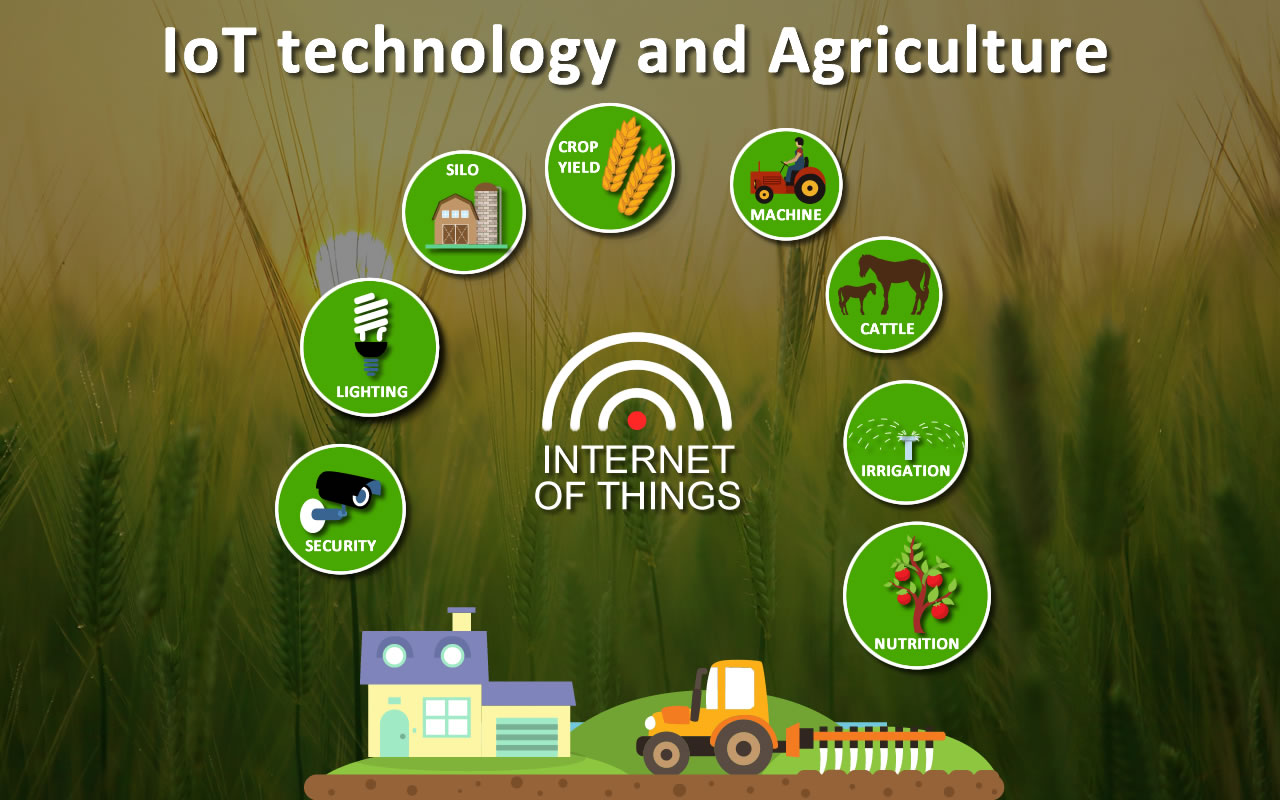internet of things agriculture
The advancement of technology has greatly impacted the agricultural industry, with the introduction of concepts like the “Internet of Things” (IoT) and “smart farming.” These terms refer to the integration of technology and agriculture, resulting in more efficient and effective farming practices. In this post, we will delve into the different ways in which IoT and smart farming are transforming the agriculture industry.
The Internet of Things in Agriculture
In simple terms, the IoT refers to the connection of various devices and systems through the internet. This technology has been applied to many different industries, including agriculture. IoT in agriculture refers to the use of sensors, cameras, and other devices to monitor and track various farming activities.

One of the most significant advantages of IoT in agriculture is that it allows farmers to monitor crop growth in real-time. By using sensors, farmers can track soil moisture, temperature, and other data points, allowing them to optimize the growth of their crops.
Another benefit of IoT in agriculture is that it enables farmers to remotely monitor their farms. This means that they can keep an eye on their crops or animals, even when they are not physically present. In the event of an emergency, they can quickly respond and take action.
Smart Farming in Agriculture
Smart farming refers to the use of technology, specifically big data, artificial intelligence, and automation, to improve the efficiency and effectiveness of agriculture. Smart farming covers a wide range of areas, including precision farming, automated irrigation, and drone technology.
One of the most significant benefits of smart farming is that it enables farmers to reduce waste and increase efficiency. By utilizing data and automation technologies, farmers can optimize the use of resources like water, fertilizer, and pesticides. This not only saves money but also has a positive impact on the environment.
Another advantage of smart farming is that it streamlines many farming processes. For example, automated irrigation systems can help farmers maintain optimal soil moisture levels without the need for manual labor. Similarly, drone technology can be used for crop imaging, allowing farmers to quickly identify areas that require attention.
Challenges and Limitations of IoT and Smart Farming in Agriculture
While IoT and smart farming have the potential to revolutionize the agriculture industry, there are also several challenges and limitations that need to be considered.
One of the primary challenges is the cost of implementing these technologies. IoT sensors and systems can be expensive, especially for small-scale farmers. Additionally, the technology requires a reliable internet connection, which can be a challenge in remote areas.
Another limitation of IoT and smart farming is that they require specialized knowledge and skills. Many farmers may not have the technical expertise required to integrate these technologies into their farming practices.
Conclusion
The emergence of IoT and smart farming in agriculture represents a significant step forward for the industry. By utilizing technology and data, farmers can optimize the use of resources and streamline various farming activities. However, it is important to recognize the challenges and limitations of these technologies and work to overcome them. With continued innovation and investment, the future of agriculture looks bright.
Sources:
- https://www.pvmishra.com/wp-content/uploads/2018/11/agriculture2.jpg
- https://www.greenbiz.com/article/future-farming-iot-ai-big-data-automation-and-labs
- https://www.zdnet.com/article/how-iot-big-data-can-transform-the-agriculture-industry/

Source image : www.pvmishra.com

Source image : www.dreamstime.com
Source image : www.istockphoto.com






